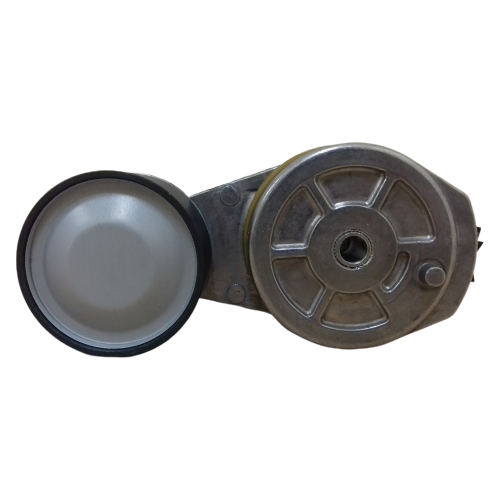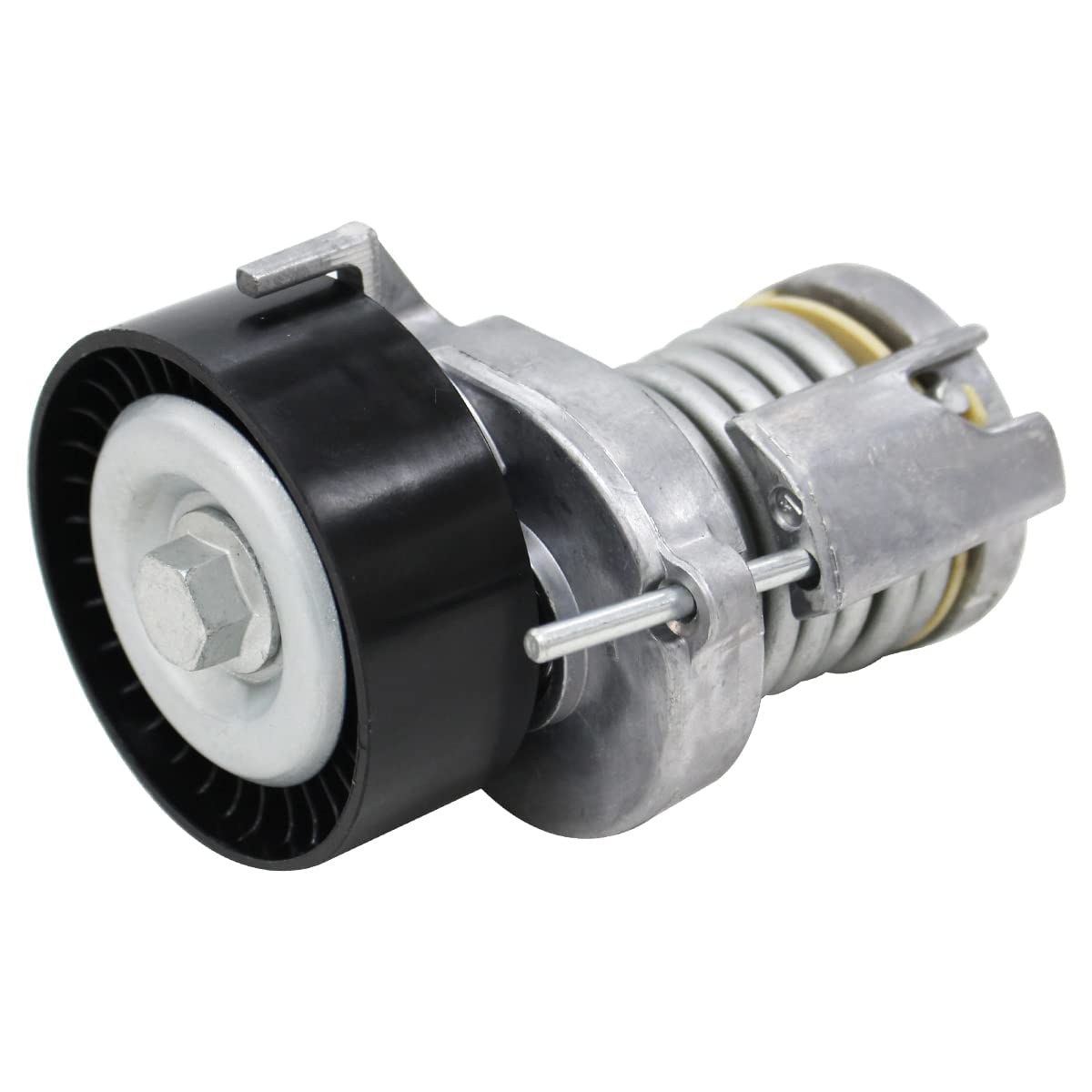Product Description
Product Description
| OuChai NO. | Oem NO. | Application | Size |
| OC8333 | 1662 16625711 |
TOYOTA | Standard |
1. We are a professional manufactory product belt tensioner for truck and passenger car.
2. Advantage:
1)Reliable and durable, Strict quality control.
2))FOB\CIF\C&F price.
3)Small MOQ.
4)Specialized in belt tensioner.
5)Wholesale for auto truck parts.
6)Supply package.
3. Packing:
1) OUCHAI packing
2) Neutral packing
3) customer request
4. Shipping:
1. By sea, DHL, FedEx, ect.
2. Within 15 days after receiving 30% deposit
About us
HangZhou OUCHAI TECHNOLOGY CO.,LTD is located in Kunyang Nailali Industrial Zone, Xihu (West Lake) Dis., HangZhou. Our factory is a professional manufacturer of producing belt tensioner with designing and selling.
Our company was founded in 2014, with RMB 3 million registered capital, and covers an area 2000 square meters. There are 30 workers in our factory, including 2 engineers and 6 technicians.
Our company fully implement IATF16949 quality management system and own the advanced production equipment, such as CNC lathe, punching machine, die-casting machine, assembly line and testing equipment.
Our products mainly exported to European, America and South East, and deeply praised by customers. We always adhere to the principle of “integrity is foundation, quality is first, CZPT cooperation” and we’ll move forward all the way.
Detailed Photos
/* January 22, 2571 19:08:37 */!function(){function s(e,r){var a,o={};try{e&&e.split(“,”).forEach(function(e,t){e&&(a=e.match(/(.*?):(.*)$/))&&1
| After-sales Service: | 1year |
|---|---|
| Warranty: | 1year |
| Car Make: | FIAT |
| Samples: |
US$ 50/Piece
1 Piece(Min.Order) | Order Sample |
|---|
| Customization: |
Available
| Customized Request |
|---|
.shipping-cost-tm .tm-status-off{background: none;padding:0;color: #1470cc}
|
Shipping Cost:
Estimated freight per unit. |
about shipping cost and estimated delivery time. |
|---|
| Payment Method: |
|
|---|---|
|
Initial Payment Full Payment |
| Currency: | US$ |
|---|
| Return&refunds: | You can apply for a refund up to 30 days after receipt of the products. |
|---|

Can you provide guidance on selecting and sizing V-belt tensioners for specific V-belt applications?
When selecting and sizing V-belt tensioners for specific V-belt applications, several factors need to be considered to ensure optimal performance and compatibility. Here’s a detailed guidance on selecting and sizing V-belt tensioners:
- Understand the Application Requirements:
- Determine the Tensioner Type:
- Calculate the Tensioning Force:
- Consider Belt Length and Width:
- Check Mounting Configurations:
- Consider Environmental Factors:
- Consult Manufacturer Guidelines and Specifications:
Begin by understanding the specific requirements of the V-belt application. Consider factors such as the power transmission requirements, operating conditions (including speed and temperature), space limitations, and any unique environmental considerations. This understanding will help determine the appropriate tensioner design and features needed for the application.
Based on the application requirements, choose the appropriate type of tensioner. Common types include spring-loaded tensioners, hydraulic tensioners, or automatic tensioners with adaptive tension control. Each type has its advantages and is suitable for different applications. Consider factors such as the desired tensioning force, adjustability, and the level of automation required.
Calculate the required tensioning force for the V-belt system. This depends on factors such as the power transmitted, the number of belts, the wrap angle around the pulleys, and the coefficient of friction between the belt and pulleys. Use the appropriate equations or online calculators to determine the tensioning force needed to prevent belt slippage and ensure proper power transmission.
Take into account the length and width of the V-belt when selecting a tensioner. Ensure that the tensioner is compatible with the belt’s dimensions. Consider the range of adjustability provided by the tensioner to accommodate variations in belt length due to wear or elongation over time. Also, verify that the tensioner can handle the width of the V-belt without any interference or misalignment issues.
Check the available mounting configurations in your application. Assess the space constraints, the position of the tensioner relative to the pulleys, and the method of tensioner attachment (e.g., bolt-on, weld-on, or stud-mounted). Ensure that the selected tensioner can be properly mounted and aligned in the available space without interfering with other system components.
Consider any environmental factors that may affect the performance and durability of the tensioner. For example, if the application is exposed to high temperatures, corrosive substances, or harsh operating conditions, choose a tensioner with appropriate materials, coatings, or seals to withstand these conditions and ensure long-term reliability.
Refer to the manufacturer’s guidelines, specifications, and technical documentation for the tensioner. Manufacturers often provide detailed information about the tensioner’s capabilities, compatibility, installation procedures, and maintenance requirements. Follow their recommendations to ensure proper selection, sizing, and installation of the tensioner for the specific V-belt application.
By considering these factors and following the guidance above, you can select and size the appropriate V-belt tensioner for your specific V-belt application. Proper selection and sizing will ensure optimal performance, longevity, and reliability of the V-belt system.

Can V-belt tensioners be customized or modified to suit specific industrial or automotive needs?
V-belt tensioners can indeed be customized or modified to suit specific industrial or automotive needs. The design and functionality of tensioners can be tailored to meet the requirements of different applications, ensuring optimal performance and compatibility with specific systems. Here’s a detailed explanation of how V-belt tensioners can be customized or modified:
- Tensioner Design:
- Automatic Tensioning Mechanism:
- Tension Adjustment Range:
- Material and Coating Selection:
- Special Features or Accessories:
The design of V-belt tensioners can be customized to accommodate various factors, such as space limitations, mounting configurations, and pulley arrangements. Manufacturers can develop tensioners with different shapes, sizes, and mounting options to ensure proper fitment within specific industrial or automotive applications. This allows for seamless integration of tensioners into existing systems or equipment.
The automatic tensioning mechanism in V-belt tensioners can be customized to suit specific needs. Different types of tensioners, such as spring-loaded tensioners or hydraulic tensioners, can be selected based on the application requirements. The tensioning force or pressure applied by the mechanism can also be adjusted or customized to achieve the desired tension levels for optimal belt performance.
The tension adjustment range of V-belt tensioners can be modified to cater to specific needs. Some applications may require a wider range of tension adjustment to accommodate variations in belt wear or elongation over time. Manufacturers can customize tensioners to provide a broader or narrower range of tension adjustment, allowing for precise tension control based on the specific requirements of the system.
The choice of materials and coatings for V-belt tensioners can be customized to suit specific industrial or automotive needs. Different materials, such as steel, aluminum, or polymers, can be used based on factors such as strength, durability, weight, and corrosion resistance. Similarly, suitable coatings or surface treatments can be applied to enhance the performance and longevity of tensioners in specific operating conditions.
In certain cases, V-belt tensioners may require additional features or accessories to meet specific needs. Manufacturers can incorporate special features or accessories into tensioner designs based on the application requirements. These may include features such as built-in belt alignment guides, idler pulleys, or protective covers to enhance belt stability, alignment, or safety in particular industrial or automotive environments.
In summary, V-belt tensioners can be customized or modified to suit specific industrial or automotive needs. Customization options include the design of tensioners, the selection of automatic tensioning mechanisms, adjustment range modification, material and coating selection, as well as the incorporation of special features or accessories. By customizing or modifying tensioners, manufacturers can ensure optimal performance, compatibility, and longevity in various industrial or automotive applications.

Can you explain the significance of proper tensioning in V-belt-driven machinery and equipment?
Proper tensioning plays a crucial role in V-belt-driven machinery and equipment. It is essential for ensuring optimal performance, efficient power transmission, and extended component life. Here’s a detailed explanation of the significance of proper tensioning in V-belt-driven systems:
- Effective Power Transmission:
- Prevention of Slippage:
- Extended Component Life:
- Reduced Maintenance Requirements:
- Optimized System Performance:
- Enhanced Safety:
Proper tensioning is vital for effective power transmission in V-belt-driven machinery and equipment. The tension applied to the V-belt ensures that it remains tightly engaged with the pulleys, creating frictional forces necessary for transferring power. Insufficient tension can result in slippage between the belt and the pulleys, leading to power loss, reduced efficiency, and compromised performance. By maintaining the correct tension, V-belt-driven systems can achieve efficient power transmission, ensuring that the machinery operates at its intended power output.
One of the primary functions of proper tensioning is to prevent slippage between the V-belt and the pulleys. Slippage occurs when the belt loses traction with the pulleys, leading to inefficient power transmission and reduced performance. Proper tensioning ensures that the V-belt remains securely engaged with the pulleys, minimizing the risk of slippage even under varying loads or during sudden changes in speed or torque. By preventing slippage, proper tensioning helps maintain reliable power delivery, consistent operation, and accurate timing in timing belt applications.
Proper tensioning significantly contributes to the extended life of V-belts and other components in V-belt-driven machinery. When the tension is too loose, the V-belt can experience excessive flexing, leading to premature wear, fatigue, and ultimately, failure. On the other hand, excessive tension can cause increased stress on the V-belt and the pulleys, leading to accelerated wear and potential damage. By maintaining the correct tension, V-belts experience optimal operating conditions, reduced wear, and prolonged lifespan. Proper tensioning also helps minimize stress on other components, such as bearings, shafts, and pulleys, further extending their service life.
Proper tensioning in V-belt-driven machinery can help reduce maintenance requirements. Inadequate tension or slippage can lead to various issues that require frequent maintenance, adjustments, or component replacements. These issues may include belt misalignment, premature wear, increased heat generation, or even system failures. By maintaining the correct tension, V-belt systems operate within their designed parameters, minimizing the occurrence of these problems. Reduced maintenance needs not only save time and effort but also contribute to lower maintenance costs and increased productivity.
Proper tensioning is essential for achieving optimized system performance in V-belt-driven machinery and equipment. When the V-belt is appropriately tensioned, it operates efficiently, minimizing energy losses and maximizing power transmission. This, in turn, leads to improved overall system performance, higher productivity, and reduced operating costs. Proper tensioning ensures that the machinery operates at its intended power levels, maintains accurate timing, and delivers consistent performance, resulting in reliable and efficient operation.
Proper tensioning also contributes to enhanced safety in V-belt-driven machinery and equipment. Slippage or inadequate tension can lead to sudden belt failures, unexpected power losses, or even accidents. By maintaining the correct tension, the risk of such incidents is significantly reduced. Properly tensioned V-belts ensure reliable power transmission, minimizing the potential for unexpected equipment malfunctions or sudden stops. This enhances operator safety and helps prevent damage to the machinery or surrounding equipment.
In summary, proper tensioning is of utmost importance in V-belt-driven machinery and equipment. It ensures effective power transmission, prevents slippage, extends component life, reduces maintenance requirements, optimizes system performance, and enhances safety. By maintaining the correct tension, V-belt-driven systems operate efficiently, reliably, and safely, contributing to increased productivity, reduced downtime, and improved overall operational performance.


editor by CX 2024-05-02